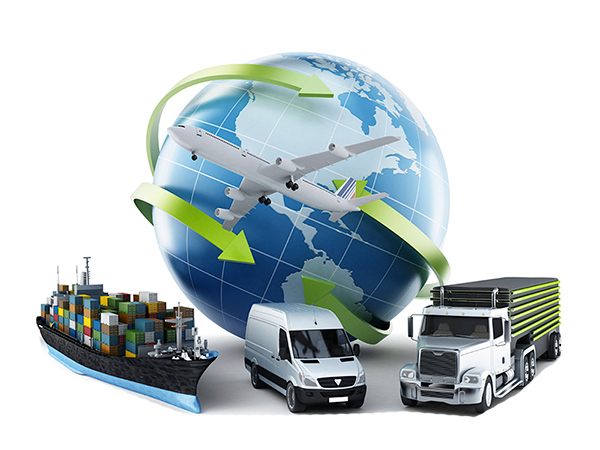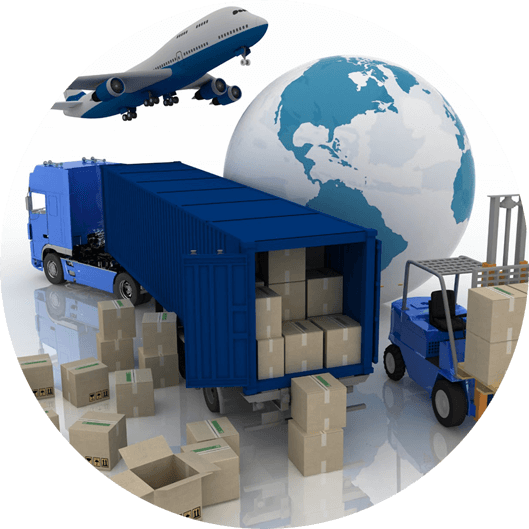What are the Different Types of Freight?
Again, freight refers to the method used to ship goods and does not explicitly refer to the types of goods being shipped. This can be confusing to those new to the freight business, but it’s essential to differentiate goods from methods
 There are four standard types of freight:
There are four standard types of freight:
- Air Cargo (airplanes)
- Ocean Freight (cargo ships)
- Rail (trains)
- Road (trucks)
How Do Freight Forwarding Companies Work?
It’s important to note that in most cases, international freight forwarders do not own the steamships, airplanes, or trucks that they use to move cargo and freight around the globe.
This brings us back to the travel agent analogy. Even massive players in the freight forwarding game do not operate their own cargo vessels. Instead, they act as go-betweens for multiple parties involved in the exportation and importation of goods. Working with a freight forwarder simplifies matters for the importer or buyer because the forwarding company, just like a travel agent, manages the responsibility of being the main point of contact throughout the entire process.
The freight forwarder manages the transport’s details from start to finish, tracking the cargo vessel’s arrival and contacting trucking or airline companies to ensure timely pickup and arrival. The freight forwarding partner coordinates these details and communicates to clients accordingly. Typically, the process of freight forwarding unfolds in ten phases.
 The Freight Forwarding Process in a Nutshell:
The Freight Forwarding Process in a Nutshell:
- Determine Credit
- Establish Mode of Transportation
- Determine Weight and Dimensions or Containers Needed
- Review Documentation
- Schedule Transportation
- Cut Bills of Lading
- Monitor the Cargo’s Movement
- Contact the Notify Party When Cargo Reaches Destination
- Arrange for Delivery to Final Destination
- Invoice the Client
First, an international freight forwarder will establish a client’s credit. Next, the forwarder will inquire about the particular transport mode of interest, delivering via ocean, air, road, or rail. Then they will identify the cargo, specifically its weight and dimensions if the cargo is less than container load (LCL), or they will identify the size and type of container in which goods will be shipped for full container loads (FCL).
From that point, the forwarder will determine rates and review documentation. Currently, it should be noted that the validity of rates is quickly changing due to COVID-related market fluctuations. The forwarder should review all relevant documentation received from suppliers or sellers and will troubleshoot if any information is erroneous or missing. Once everything is in order, the forwarder will create or “cut” the House Bill of Lading and Master Bill of Lading and schedule the transportation of goods.
Once the shipment reaches Customs, the forwarding partner will contact the Notify Party. This party may be the Customs broker, Importer of Record, consignee, or the importer. Once the cargo clears Customs, the international freight forwarder will arrange the last leg of shipping and invoice upon delivery, unless other payment arrangements have been made.
ARAM GLOBAL LOGISTICS are experts in international freight forwarding and logistics would be eager to answer any additional questions you may have.
